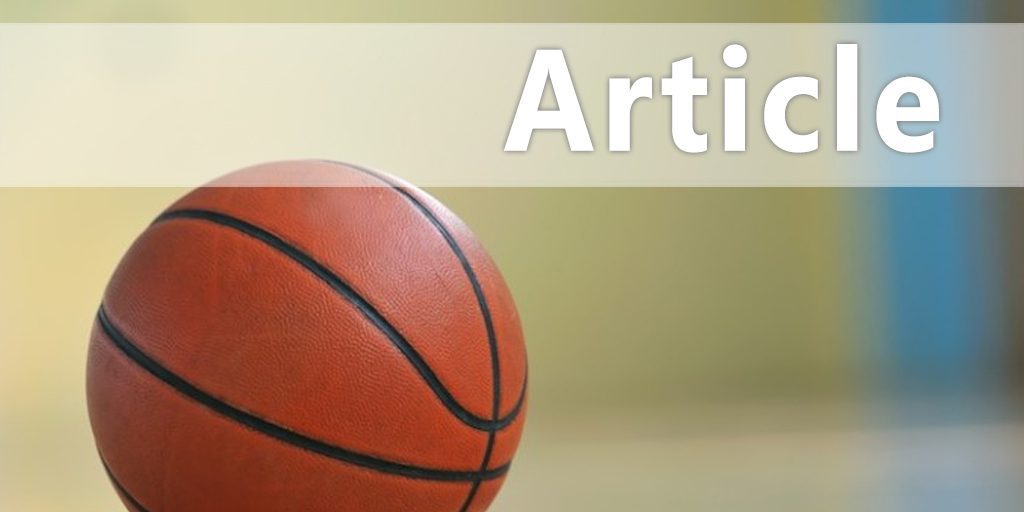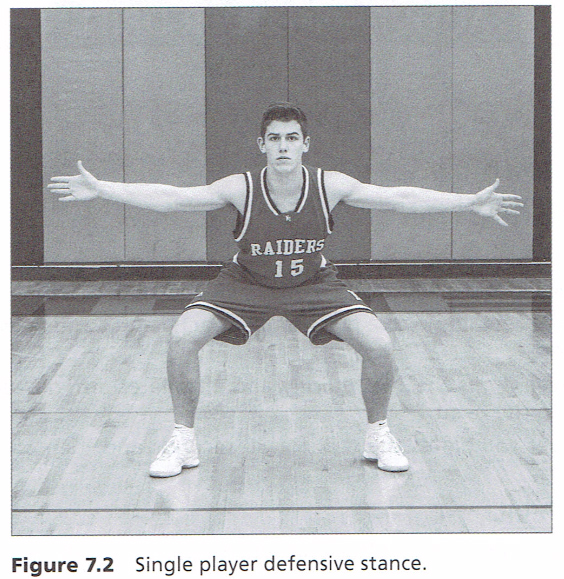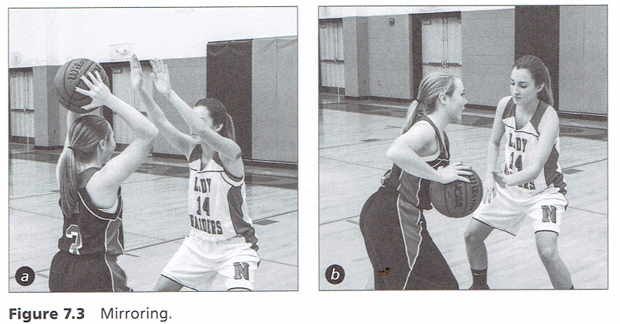| Individual Defensive Drills |
| By: Ryan Goodson
Originally Published in: Basketball Essentials Provided by: Human Kinetics BREAKDOWN Setup • Use one player. • The player starts the drill under the rim on the baseline. Execution 1. The player sprints and closes out at the free-throw line by leading with the right foot and right hand. 2. The player then quickly turns and sprints back to close out at the baseline by leading with the left foot and left hand. 3. The player repeats this for 30 seconds and then completes two more repetitions. Coaching point Remember to tell the player to sprint and then chop! The player should sprint the first two-thirds of the space between the player and the opponent, and then chop their feet the last one-third of space to close out before coming to a complete stop. Stance Once your opponent has the basketball on the perimeter, maintain a low and athletic stance with your weight slightly forward on the balls of your feet (figure 7.2). Place your nose in line with your opponent's sternum and fix your eyes on their midsection. This will help you keep your opponent in front of you. The ball handler might fake with their eyes, their feet, or the basketball, but they cannot fake with the body. Wherever the core goes, the opponent must follow. A small cushion of space will also help you keep your opponent in front of you. Always attempt to keep one arm's length of space between you and the ball handler when they are in the triple-threat position or when they are dribbling. If the ball handler picks up their dribble, which is called a dead ball, quickly close that gap and pressure the ball handler because they now must remain stationary. Be Active A great coach once said that "a defensive player that stays in motion is always ready for motion." Remember to be active with your feet and hands. Chop your feet quickly to remain ready to react to your opponent's movement, and use your hands to mirror the basketball wherever the ball goes.
For example, if your opponent moves the basketball high, your hands mirror the ball high; if the basketball moves low, your hands mirror the ball low. Mirroring the basketball helps you create more deflections and steals, and it can also create a sense of urgency and push the offensive player outside of their comfort zone (see figure 7.3a and b).
ACTIVE DEFENDER DRILL BREAKDOWN Setup • The player is in a low and athletic stance. Execution 1. The coach blows a whistle. 2. The player remains in one place and has active feet and active hands for 30 seconds. 3. The player chops the feet quickly and alternates arm movements from the hip to the head. 4. The player completes the drill for 30 seconds and then completes two more sets. Coaching Point The player should maintain a low and athletic stance for the duration of the drill. There is a tendency for players to slowly come out of the stance as they become fatigued. SHADOW DRILL BREAKDOWN Setup • Use two players and one basketball. • Player 1 begins with a basketball in the triple-threat stance; player 2 closely defends. Execution 1. Player 1 quickly and randomly moves the basketball from high to low and low to high while gripping the basketball with two hands. 2. While in a defensive stance, player 2 attempts to mirror the basketball with the lead defensive hand and follow it wherever it goes. 3. Players repeat the drill for 30 seconds and then complete two more sets. Coaching Point The defensive player mirrors the basketball only with the lead hand (not the back hand). If the offensive player pivots and changes their stance, the defensive player should quickly drop pivot to maintain inside position and also switch the lead hand. |








